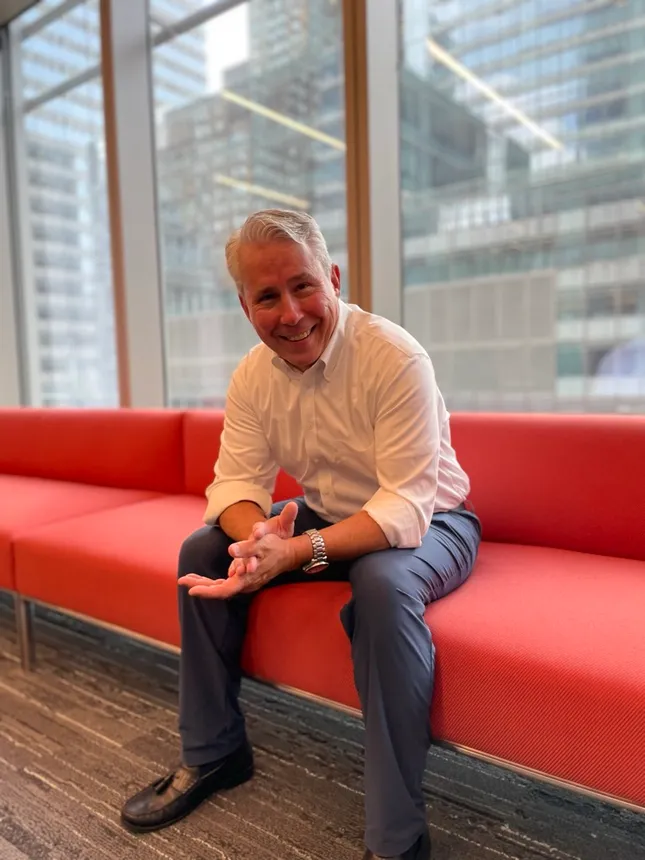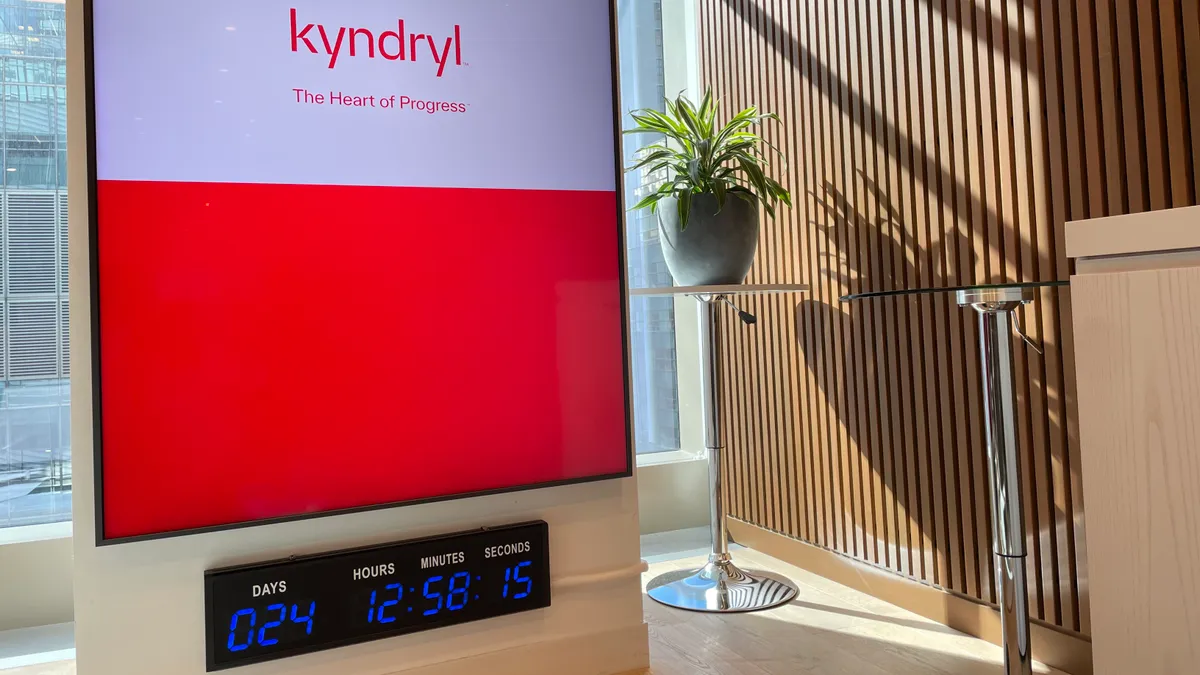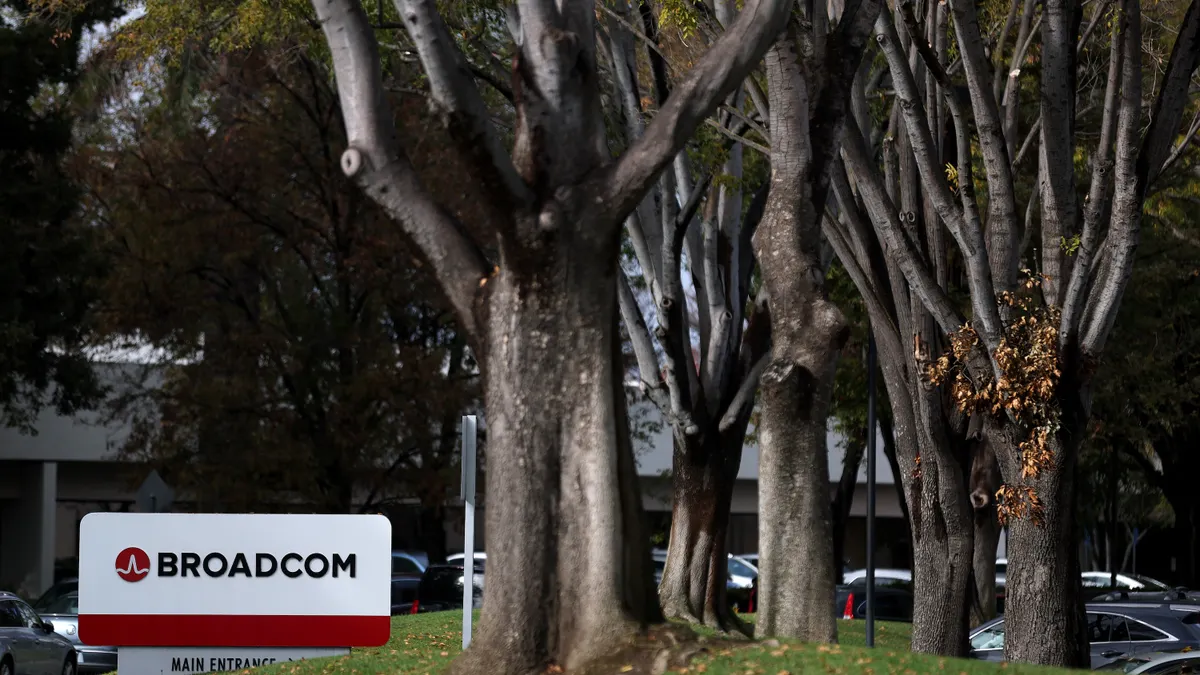When IBM completed its spinoff of Kyndryl on Nov. 4, 2021, a countdown clock started ticking.
The nascent managed services infrastructure company had two years to decouple its IT stack from the legacy tech giant or fall subject to commercial pricing, according to a transitional service agreement.
The pressure was on CIO Michael Bradshaw as the challenge of untangling Kyndryl from IBM got underway.
“The tax-free nature of the spinoff IBM performed is what drove a constraint on the arrangement,” Bradshaw told CIO Dive. “If we had elements that slipped past the [transition service agreement], we could have extended but that wouldn't have been anything we wanted from an affordability standpoint.”
There was also a deeper motivation for the push. “For us, it really was an existential challenge,” Bradshaw said, who has extensive experience at legacy brands, including NBC Universal, Lockheed Martin and IBM. “If we want to evolve and get this business to where it needs to be with fit-for-purpose systems and capabilities, we have to get out of the IBM systems.”
Most CIOs would jump at the chance to tear down the existing stack and start anew, free from years of accumulated technical debt, siloed data and aging on-prem systems. But ground-up rebuilds aren’t easy.
“I inherited what they decided would be given to Kyndryl,” Bradshaw said, including sales systems that were “important but peripheral to running the business. What they didn't clone were basically the heart and lungs of any company: the financial systems and the ERP function.”
As the clock ticks down the hours, Bradshaw's team is on track to flip the final switch two days ahead of the Nov. 3 deadline.
Keeping it simple
Digital transformations seek to streamline processes, reduce operational friction and rationalize key systems. But the impulse to shoehorn best-in-class tools and capabilities into the existing stack can lead organizations astray, into a disconnected sprawl of SaaS and cloud deployments.
As Kyndryl took ownership of its tech, Bradshaw prioritized simplification. Workloads migrated to Azure. Everything ERP went on SAP. If it involved workforce matters, Workday was the solution.

“We had a few things that were in the IBM cloud that we'll be transitioning out over time as it makes sense,” said Bradshaw. “And we’ll make a business-justified decision on which hyperscalers we use if we use anything outside of Azure.”
In the process, Kyndryl folded over 100 financial systems onto one platform and reduced more than 1,500 active apps to just a few hundred, according to Bradshaw.
“We had over 1,800 applications in over 50 data centers around the world, with hundreds of siloed data structures,” Bradshaw said. “We’re going to zero data centers with everything in cloud.”
Modernizing Kyndryl’s infrastructure had multifunctional impacts.
“When you don’t have people chasing data in different systems, the nature of the work changes,” Bradshaw said. “It allows us to spend more time on insight, and it’s not unique to finance. Same thing in the HR space. Same thing in procurement. Same thing in order-to-cash.”
The process enhancements drove business performance.
The company inched toward profitability in the first half of the year, cutting net losses to $141 million during the three-month period ending June 30.
“Annual losses are now behind us,” Chairman and CEO Martin Schroeter said during Kyndryl’s Q1 2024 earnings call in August. “We expect to make money this year and each year going forward.”
The company expects digital transformation to reduce selling, general and administrative spending by more than $200 million and as much as $300 million annually through productivity and efficiency gains.
Transforming the culture
In enterprise modernization, tech is only half the battle. To reap the full benefits of transformation investments, culture has to change, too.
“Organizational change management is always the hardest part of any transformation,” said Bradshaw.
“One of the attractors for me was to be able to come and replicate some of what we had done from a cybersecurity standpoint and at NBC Universal, which was an offshoot of my experience at Lockheed Martin and what I got exposure to there — basically, taking aerospace-based cybersecurity into media and then into the managed services space.” Bradshaw said.
Securing C-suite buy-in, Bradshaw’s initial imperative, came quickly at Kyndryl, as a byproduct of the spinoff, he said. Leadership wasn’t content with operating Kyndryl as an IBM business unit.
“We had the [transition service agreement] to rally around,” Bradshaw said. “But we had to have a plan for the IT, and I had to have the alignment of the senior leadership. We talked through the approach and everybody signed off on it.”
Cross-functional input and support were key to the strategy, as was a determination to not let perfection become the enemy of progress, according to Bradshaw.
“The functional leaders are the ones that made the decisions about what was good enough for right now,” Bradshaw said. “Getting into the platforms and living in those platforms is so important. It's a different way of running than most companies are used to. Even here, they were used to an ecosystem with lots of different applications, lots of customizations.”
The goal was and remains to shift the technology and culture, identify pain points, iterate and improve, he said.
“If you aim for perfect,” Bradshaw said, “it’s a showstopper”
Correction: This story has been updated to reflect Kyndryl's decoupling deadline is Nov. 3.






















